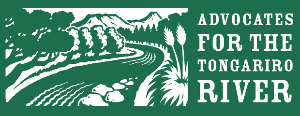DIDYMO
I have placed on our website these three articles on Didymo. On our website they are to be found in Key documents
But first some key points to consider:
- Â Biosecurity is the responsibility of the Ministry of Primary Industries (PMI)
- DOC has a contract with MPI to get the Didymo message to the public
- Dr Cathy Kilroy of NIWA is highly respected for her work on Didymo in NZ
- https://www.facebook.com/ccdtaupo is well worth looking at and will be a link on our website.
- All articles are in the public domain
- Â The Origin of Invasive Microorganisms Matters for Science, Policy, and Management: The Case of Didymosphenia geminata
BRAD W. TAYLOR AND MAX L. BOTHWELL
 This article argues that Didymo has been here all along. Brenda Lawson of DOC and Cam Speedy of Genesis comment on this in this blog.
2. The Didymo story: the role of low dissolved phosphorus
in the formation of Didymosphenia geminata blooms
Max L. Bothwella, Brad W. Taylorbc & Cathy Kilroyd
 This article presents a reason why Didymo is not present in certain waters. Cam Speedy in his reply to my email to him states that this is a complex issue.
- This article appeared in the NZ Herald.
Was didymo here all along?
http://www.nzherald.co.nz/nz/news/article.cfm?c_id=1&objectid=11252451
 A response from Brenda Lawson.
Hi Eric,
Here is the NZ Herald article where Cathy Kilroy talks about high phosphorus levels.
You can also access it on our facebook page and we would appreciate you sharing the page  Facebook  – “CheckCleanDryTaupo†– https://www.facebook.com/ccdtaupo
As Cam explained the Cawthron Institute have grown Didymo in North Island River water in a laboratory – including water from the Tongariro.
That Didymo “morphed†overseas to become the invasive species that it is now, could possibly happen with other species so the Check Clean Dry programme is our way of stopping any existing, and any potential invasive species from travelling around our waterways.
Luckily with Didymo the solution is really simple because it can be killed by common household products such as dishwashing liquid. Imagine if it was as complicated as Influenza where chemists and pharmaceutical companies spend millions developing vaccinations.
So yes it would be great to have scientifically proven evidence that Didymo could not grow here, and a great relief, but we would still recommend Check Clean Dry. Check Clean Dry is here for the long term protection of our waterways.
Of concern to me is the number of anglers and recreationalists that still move around our rivers and lakes without using CCD.
Often they will say to me “ If Didymo was here I would clean my equipment†But we can’t be certain at any given moment that Didymo is not here.
We sample the Tongariro every month and 6 other rivers every second month. On not one day can I tell you that we are negative for Didymo. Once I have taken the river sample I send it to be tested which takes approx seven days. When I get the result 7 days has passed and then it is another month or two months until I test again.
The question I often ask river users is “If Didymo did come to a river in our area, would you like it in every river?†The answer is always “NO!†The only way to stop that happening is to Check Clean Dry between every river.
CCD Tips
Dry plus 48 hrs.
Keep to one waterway per session if you don’t care to clean.
Make CCD easy – a garden sprayer ($15)  with solution made up in the back of your vehicle. It then only takes 5 minutes to clean!
Please pass on that we have a supply of free 1 litre and 250ml bottles with detergent & also boot clean bags – please contact me or visit the DOC office in Turangi.
If you would like more information please don’t hesitate to call me.
Kind regards
Brenda
A response from Cam Speedy, Genesis Energy, Tokaanu, Environmental Team.
Hi Eric,
 The Phosphorous thing is a real ‘potential’ effect – we live in that hope for the sake of our North Island rivers. It is hard to believe that no-one has brought didymo to the Nth Is yet…. It is evident from the results of some of the social science that there is still a significant proportion of freshwater users who still don’t clean their gear.
 However, The Cawthron Institute have grown didymo in North island water (at a South island location), so it’s not as clear cut as one might think. NIWA have also carefully (on sound scientific grounds) refuted the hypothesis that Didymo has always been present, and that some human induced change has allowed it to suddenly bloom here. It is still officially considered an invasive species in NZ and will continue to be so.
 The Check Clean Dry campaign is still alive and well as there are 1000’s of potential invasive spp that could impact our freshwater ecosystems. The Lagarosiphon incursion into Lake Waikaremoana is a good example of the ongoing risks posed even by existing invasive spp. If Hornwort got into lake Otamangakau, that would be a disaster too!! It is totally fair to look at a bigger picture on this issue. Encouraging a (“Culturalâ€) behaviour change towards aquatic biosecurity is a positive objective which the Central Nth Is. Freshwater Pest Regional Partner Group still strongly supports, and actively encourages stakeholders to support.Â
 Cheers
Â
Cam
Â
My conclusion is that each of us has a responsibility to play our part.
Â
Eric Wilson
Secretary
